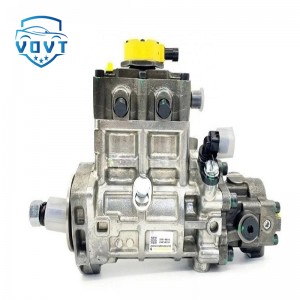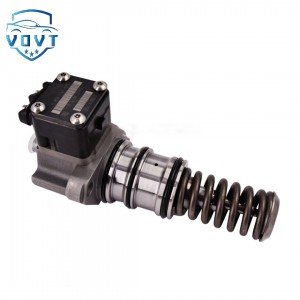Made in China Top Quality Diesel Fuel Injection Pump BH3Q75R8 Engine Elements
products description
| Reference Code | BH3Q75R8 |
| MOQ | 1 PCS |
| Certification | ISO9001 |
| Place of Origin | China |
| Packaging | Neutral packing |
| Quality Control | 100% tested before shipment |
| Lead time | 7~15 working days |
| Payment | T/T, Western Union, Money Gram, Paypal, Alipay, Wechat |
Research on diesel oil pump performance optimization and fault diagnosis technology
Diesel oil pump as the core component of diesel engine fuel supply system, its performance is directly related to the engine power output, fuel economy and emission indicators. With the continuous improvement of energy efficiency and environmental protection requirements of modern industry, in-depth study of diesel oil pump performance optimization and fault diagnosis technology is of great practical significance.
The structure and working principle of the diesel oil pump
Diesel oil pump is mainly composed of pump body, plunger, discharge valve, inlet valve, camshaft and governor and other components. Its working principle is based on the rotation of the camshaft to drive the plunger in the pump body to do reciprocating motion. When the plunger downstream, the pump cavity volume increases, the pressure decreases, the inlet valve opens, diesel is sucked into the pump cavity; plunger upstream, the inlet valve closes, the pump cavity diesel is compressed, the pressure rises, when the pressure reaches the pressure of the outlet valve to open the valve opens, high-pressure diesel fuel is transported to the nozzle sprayed into the cylinder combustion.
The diesel oil pump performance optimization measures
Improve the design of the plunger coupling: use new materials and precision machining technology to improve the accuracy and surface quality of the plunger and plunger sleeve, reduce friction loss, improve pumping efficiency and sealing.
Optimize the structure of the fuel outlet valve: design a reasonable decompression volume and sealing cone of the fuel outlet valve to reduce the pressure fluctuation after fuel injection, improve the fuel injection characteristics, and increase the combustion efficiency.
Precise speed control: use advanced electronic speed control technology to realize precise regulation of oil pump oil supply, real-time adjustment according to the engine conditions to improve fuel economy and power performance.
The diesel oil pump common fault diagnosis and maintenance
Insufficient pump oil pressure: it may be caused by plunger wear, poor sealing of oil outlet valve or blockage of oil inlet pipeline. By checking the plunger wear, grinding the outlet valve sealing surface or clean up the oil inlet pipeline and other methods of maintenance.
Uneven oil supply: Causes include inconsistent spring elasticity of the plunger, loose adjusting ring, etc. Replace the spring or recalibrate the adjusting ring. It is necessary to replace the spring or recalibrate the adjusting ring to ensure that the oil supply to each cylinder is even.
Abnormal noise and vibration: may be due to the internal parts of the oil pump loose, wear and tear or diesel fuel impurities. The oil pump should be disassembled, check and tighten the parts, clean the inside of the oil pump, replace the worn parts.
The performance optimization and troubleshooting techniques of diesel oil pumps are crucial for improving the overall performance of diesel engines. By continuously improving the design and manufacturing process of the oil pump, adopting advanced performance optimization measures, as well as using effective troubleshooting methods and maintenance strategies, the reliability, efficiency and service life of the diesel oil pump can be significantly improved to meet the requirements of modern industry for diesel engines with high efficiency, low consumption and environmental protection, and to promote the technological progress and development of related fields. At the same time, it is necessary to further strengthen the research and innovation of diesel oil pump technology in the future to adapt to the changing market demand and more stringent regulations and standards.























